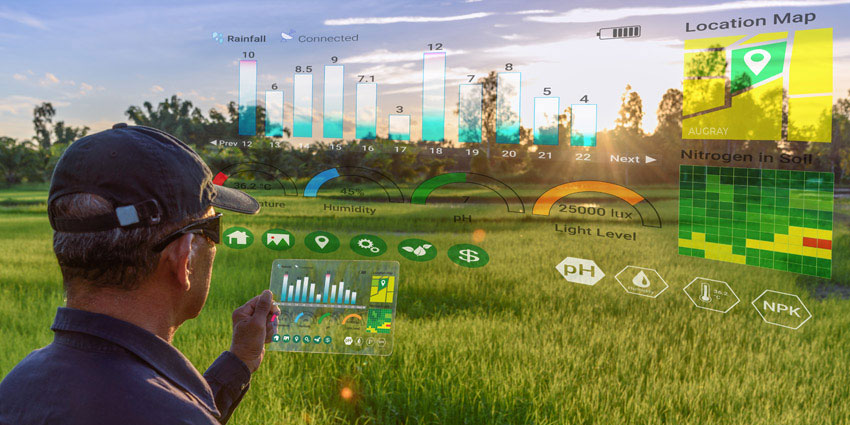The Future of Site Surveying: How Data Collection is Changing the Game
Site surveyors have been working for as long as land has been bought, claimed, fought over, and sold. That doesn't mean there aren't opportunities for game-changing technological advancements to occur in this profession. In the beginning, data collection occurred when site surveyors used their feet to measure the land and report back. Things have changed drastically since then. We've moved away from using lengths of chain and compasses to using electronic measuring tools. Now surveyors can embrace tools that sense the environment around them, as well as other site surveying tools for data collection. We’re going to discuss the future of site surveying and how data collection is changing the game.
Providing Project Team Clarity
As surveyors continue adopting more technologies, there will be a need for automation in data acquisition. In turn, the amount of data that is aggregated and processed into usable information increases. This information is used to accelerate the decision-making process for the overall project. Surveyors use monitoring software that automatically manages measurement cycles, the flow of incoming data, and communications. That way, geological equipment and sensors can produce results as visuals, including charts, graphs, and maps. In doing so, the project teams receive the clarity they need regarding what step to take next.
Form Builder
Implementation of a form builder allows site surveying to move to the next level. Site surveyors can build powerful forms using the data they collect, process, and aggregate. These forms are an excellent way of keeping everyone on track regardless of where they’re surveying. The form builder is also exceptional for the development of custom site surveys, as well as keeping track of crew progress.
Create High-Quality 3-D Laser Scanned Measurements
The use of 3-D laser scanned measurements is an innovation that is a game-changer regarding the future of site surveying. Fifty thousand beams are used to map out a 3-D model when 3-D laser scanners are in use for site surveying and mobile data collection. Site surveyors can also use these scanners throughout land areas where the creation of bridges, buildings, parks, roads, and other projects are going to occur. In doing so, they can create visually impactful images of these spaces. Use of this technology also aids in creating original pictures and drawings of a construction project's process.
Mobile Access
Mobile access is essential for data collection transfers during these laser scanning measurements. Site surveyors can achieve this goal even if they don’t have a signal. They can work with a variety of forms on their Android and Apple devices. Using this technology allows them to work offline with their crew members to collect data, sign documents, and take pictures.
Surveying and the BIM Cycle
Building Information Modeling (BIM) is a process in which 3-D virtual models of buildings are in use in conjunction with the collection and management of building data. Site surveyors are paying closer attention to the importance of BIM, as well as its opportunities. The main reason is that, when it’s in use, BIM dramatically reduces the time it takes for building a structure, as well as it’s overall cost estimation. Site surveying and data collection play a critical role in BIM's lifecycle process. Site surveyors can use BIM as a centralized platform for sharing collected data in real-time to help enhance workflows, as well as communications. Using BIM allows site surveying to advance in ways that weren't previously possible. Surveyors can work off of live models when listing or staking out data points. That way, other parties have access to this information and can provide immediate feedback despite their location.
Reporting
Reporting is critical for delivering high-quality specifications. Using the BIM cycle is a game-changer in site-surveying because projects are delivered under budget and on schedule. High-quality specifications allow site surveyors to improve communication and enhance information deliverables. The creation of such reports allows everyone involved in the project to see the big picture. When data is collected, it’s viewable in broad strokes or, alternatively, it’s possible to gain specific insights by focusing on hand-picked elements within the collection. This data is also viewable by location in the form of text, like graphs, as well as high-quality audio, photo, and video.
Conclusion
Technological advancements are moving into the site surveying industry in leaps and bounds; it's just a matter of embracing and implementing them. The development of each of these technologies is to help streamline, advance, and enhance processes. In addition to providing team project clarity, high-quality measurements, and virtual models, site surveyors have opportunities to utilize forms, mobile access, and reporting tools to streamline their data collection process further. LaunchCloud is a proactive approach to helping determine the future of site surveying and how data collection is changing the game to maximize company scalability so that your business can flourish with an increase in profit.
Array helps construction operation professionals effectively communicate and improve operational visibility. Array's customizable forms and reports enable better construction site workflows by increasing project visibility and improving field communications.
To see how your construction company can have a better workflow, schedule a 1-on-1 demo with an Array specialist now.
Resources:
· https://pdhacademy.com/2018/04/18/the-changing-landscape-of-surveying-technology/
· https://www.khl.com/international-construction/surveying-equipment-game-changing-/138178.article
· https://www.gim-international.com/content/article/chasing-bim-how-surveyors-can-shape-the-future
· https://www.buildarray.com/blog/productivity/remote-data-collection-team-management-w-array
· https://www.buildarray.com/blog/intelligence/data-reports-your-fingertips


